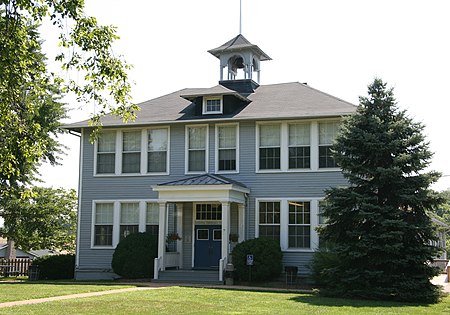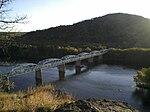Lucketts School

The Lucketts School in Lucketts, Virginia was built in 1913. It is a wood-frame schoolhouse with elements of Colonial Revival and Craftsman style. It was originally known as Lucketts High School and was expanded in 1919 with additional classrooms and in 1929 with a small auditorium. It was one of the first multi-room schools in Loudoun County, and remains one of the best-preserved early 20th century schools in the county. The last high school students graduated from Lucketts in 1938, but the school was used as an elementary school until 1972 when a new Lucketts Elementary School was built on an adjoining site. Education still continues here in the form of certified child care offered to residents of Loudoun County. In an effort to preserve the old school for community use the first Lucketts Fair was held in 1972, a tradition which continued until 2018 as a means of financing the maintenance of the building. It is now operated as the Lucketts Community Center by the Loudoun County Department of Parks and Recreation.
Excerpt from the Wikipedia article Lucketts School (License: CC BY-SA 3.0, Authors, Images).Lucketts School
Lucketts Road,
Geographical coordinates (GPS) Address Nearby Places Show on map
Geographical coordinates (GPS)
| Latitude | Longitude |
|---|---|
| N 39.21496 ° | E -77.53424 ° |
Address
Lucketts Community Center
Lucketts Road 42361
20176
Virginia, United States
Open on Google Maps






